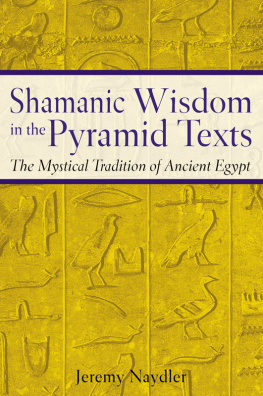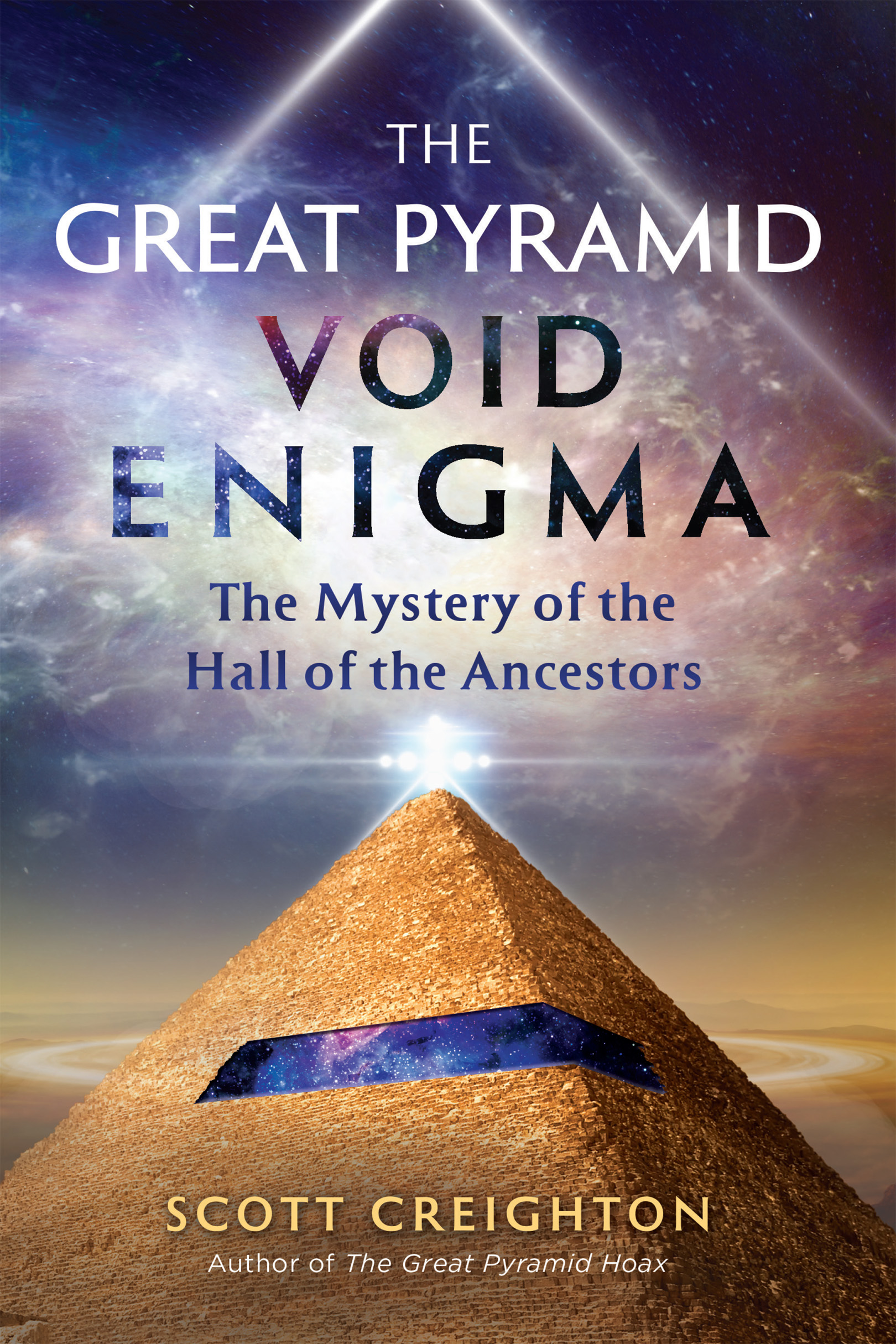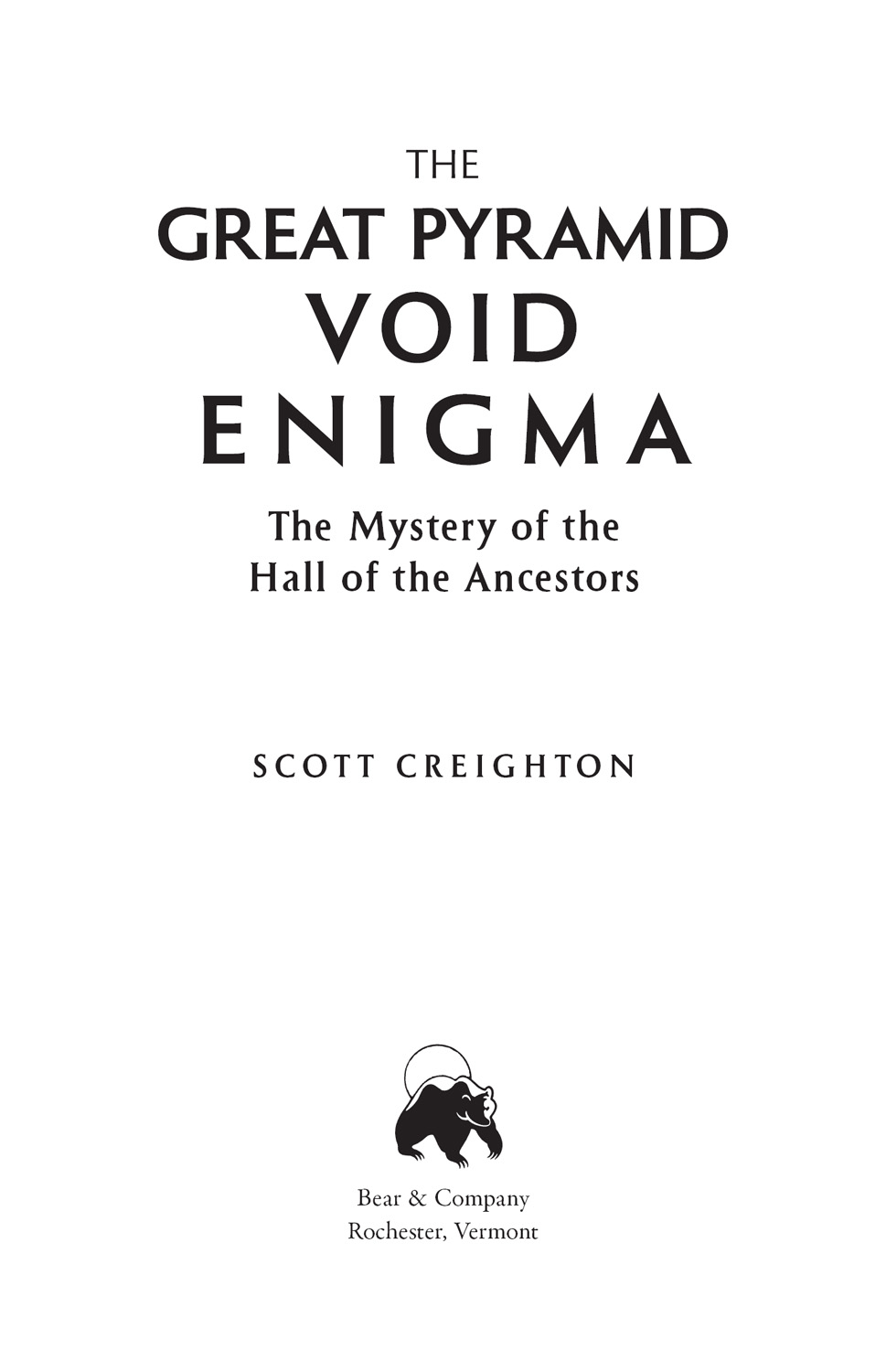This book is dedicated to the memory of my beautiful niece,
Stacey Diane Creighton
(19822020),
who was called from this earthly realm much too soon. She could sing like an angel, and the angels will surely embrace her as one of their own.

The ideas in this book would likely never have seen the light of day were it not for the many other authors, researchers, scientists, and thinkers who have gone before me and upon whose shoulders many of the ideas in this book stand. To those great and maverick thinkers and researchers who paved the wayGraham Hancock, Robert Bauval, Robert Schoch, the late, great John Anthony West, and last but by no means least, Rand and Rose Flem-AthI thank and salute you all.
Writing a book such as this is, for the most part, a lonesome endeavor and not without its problems and setbacks. Without the daily encouragement of my wife, Louise, this book might never have been completed. I cannot thank you enough for always being there, Sweets. We had some exhilirating and fun-filled days at the height of the research, none of which was at all easy during a global pandemic.
My children were very young when I began my writing adventure. They are young adults now, studying at university and making their own way in the world. But in both of them I see young minds that are willing to question, a characteristic that will, Im sure, stand them in good stead in the years to come. Thank you, Jamie and Nina for all your questions.
Gary Osborn, coauthor of my first book, The Giza Prophecy, deserves a special mention here. He has always been willing to look over my work with a critical eye and has, in this book, added a quite brilliant insight which helped make better sense of some of my findings.
Kayla and Jeffery, my tireless and brilliant editors at Inner Traditions Bear & Co., also deserve much credit and plaudits here. Their attention to detail is truly astonishing, and it is through their skill and dedication that this book is what it is. Thank you both.
And finally, to my critics. Without you there would be few questions for which to seek answers. Thank you all for driving me to dig ever deeper into the mysteries of our past.
THE GREAT PYRAMID VOID ENIGMA
With some of the best forensic reporting, Scott Creighton looks again for answers to the most intriguing questions ever to emerge from the Great Pyramid. The mysterious and unexplained Big Void, revealed in 2018 by subatomic-particle physicists, has baffled everyone so far, but now, with a wealth of facts and details unavailable from any other single source, Creighton makes stunning connections between cutting-edge science and esoteric tradition, and he backs it all up with some very impressive detective work. If you want to know the factsand be thoroughly enthralledyou must not skip this terrific read.
J. DOUGLAS KENYON, AUTHOR OF GHOSTS OF ATLANTIS
Everyone loves a mystery, and the mystery of Gizas Great Pyramid is perhaps the most enigmatic mystery known. Who built it? When, and why? These three questions have tantalized researchers and historical chronologers seemingly forever. Recently, the scientists of the ScanPyramids project discovered a large void as long and wide as the Grand Gallery itself; another large chamber hidden within an enormous, incredibly ancient structure. Its a mystery, of course. In The Great Pyramid Void Enigma, Scott Creighton digs deep into the history and the most pertinent of legends surrounding Egypts pyramids and the Great Pyramid in search of answers to the big questions of who, when, and why. Creighton sifts through the legends and explores the landscape of one of the most tumultuous times of our past, a time of climatic chaos and mass extinction 12,000 years ago. Most of all, he spins a marvelous story around a complex topic that the best of mystery writers will surely envy, and he links a 12,000-year-old catastrophe to the beginning of our own history. A fascinating and enlightening book. I couldnt put it down.
EDWARD F. MALKOWSKI, HISTORICAL RESEARCHER, AND AUTHOR OF ANCIENT EGYPT 39,000 BCE
In true whodunit style, Creighton transports the reader on a journey of exploration, skillfully weaving powerful themes with clear emotional expression, endeavoring to reveal the truth behind Egypts fabled Hall of the Ancestors. A comprehensive blend of history, archaeology, and ancient pyramid lore, it will undoubtedly rouse your curiosity.
LORRAINE EVANS, ARCHAEOLOGIST, HISTORIAN, AND AUTHOR OF BURYING THE DEAD
Scott Creighton casts fresh eyes on one of the worlds oldest mysteries, shattering the expectations that there is nothing new to be revealed about the marvelous megaliths of Egypts Giza Plateau. Go inside the Great Pyramid void, and youll emerge looking back with reawakened wonder.
RAND FLEM-ATH, RESEARCHER AND COAUTHOR OF THE ATLANTIS BLUEPRINT AND THE MURDER OF MOSES

INTRODUCTION
Piecing Together a Bigger Picture
History is like a multidimensional jigsaw puzzle: we know that an overall picture exists, but often, particularly with our most ancient prehistory, the picture is but the faintest of outlines because while some of the pieces of the puzzle have been correctly placed, many others have been set down in the wrong place; sometimes the pieces we have are mixed up with pieces from other puzzles; and worst of all, sometimes pieces are simply lost, preventing us from ever completing the picture. With no box cover to guide us and with only a few of the pieces of the puzzle in the correct place, we can only ever make an educated guess as to what the partially completed picture truly represents. Similarly, in archaeological research, we can perceive but a faint sketch of our remote past from the clues we piece together.
And so it is with the early, giant pyramids of the Old Kingdom of ancient Egypt. They rise out of the desert sands like some giant, geometric jigsaw puzzle, a puzzle in which we cannot even be certain that we have all of the pieces, and of those that we do have, we cannot be sure that we have placed them in the correct place in order to make sense of and build the true history, the correct picture, of these ancient monuments.
Of the pieces that we do possess, they were found by many different individuals, often centuries apart, making the progress toward building a true, complete picture of these monuments frustratingly slow. But gradually, enough pieces were found to allow us to come to a consensus as to what the partially completed picture is showing us. And this is essentially where we find ourselves today with mainstream Egyptology, whose consensus view of these ancient monuments is that they were built as tombs of the pharaohs, that they were devices constructed in monumental stone architecture that would ensure that the pharaohs could journey to the heavens and to an everlasting afterlife among the gods residing there, the stars.
How Egyptology came to this view is a story in itself, for it wasnt always the case that the prevailing tomb theory was the accepted purpose for these ancient structures. The purpose of the pyramids is but one small part of the overall picture that we are trying to piece together. Compounding this particular issue and making the puzzle almost impossible to solve is the fact that unscrupulous individuals have placed some pieces of their own making into the mix, pieces that simply do not belong to the puzzle at all but that have the effect of completely blurring and confusing the true picture, resulting in incorrect interpretations and conclusions being reached.








